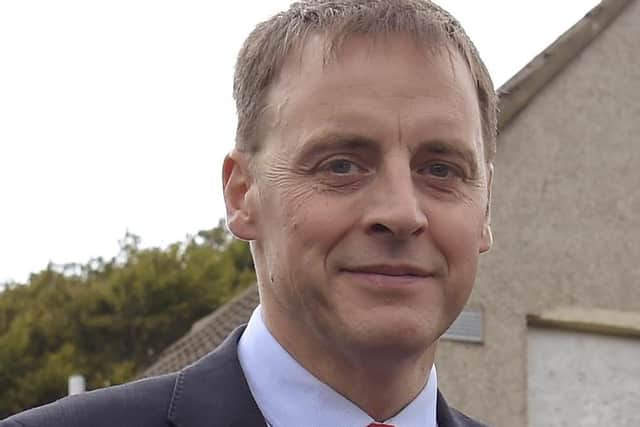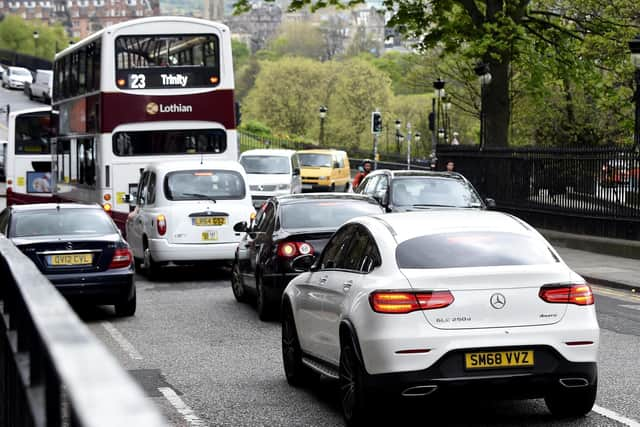Edinburgh transport blueprint: Public transport plans 'will make Edinburgh one of leading cities in Europe'
and live on Freeview channel 276
Edinburgh will be one of the leading cities in Europe for clean, green, efficient travel within a decade, transport convener Scott Arthur claimed as he unveiled the latest parts of the council’s vision for the Capital.
The blueprint for a more sustainable, inclusive and affordable transport system includes key corridors into the city where public transport, walking and cycling would be given priority; tougher enforcement against drivers parking in bus lanes; a coherent cycle network suitable for all ages an abilities; car-free zones outside schools; better-designed and lit bus stops to improve safety; longer green-man phases at pedestrian crossings and traffic lights; wider footpaths; more zebra crossings; and integrated bus and tram tickets.
Advertisement
Hide AdAdvertisement
Hide AdThe city has set a target of becoming net-zero by 2030 and reducing number of vehicle miles in the city by 30 per cent in the same timescale. Cllr Arthur said: “Edinburgh is a congested city. The council agreed just before Christmas we would set aside land for a further 37,000 houses over the next ten years or so. Congestion in the city is only going to get worse. Ultimately as a city we have to find a way to deal with this – I don't think doing nothing is an option and there's only so much we can do in terms of fine-tuning traffic light times.”


Other objectives set out include ensuring that, no matter where someone lives in Edinburgh, they will be within 250-400 metres of an access point to the cycle network; providing 500 more benches across the city; installing up to 10,000 dropped kerbs; and building up to 200km of segregated cycling.
The blueprint is made up of five separate action plans on active travel, public transport, parking, air quality and road safety and an overarching “circulation plan”. The air quality and road safety plans have already been approved and the other three will be submitted to the transport committee for endorsement next Thursday (February 2). A three-month consultation on all five action plans will then begin from March, including stakeholder workshops, an online questionnaire and public drop-in events.
‘Transform Edinburgh for the better’
Cllr Arthur said together the Active Travel and Public Transport action plans were “a gamechanger” for the Capital. He said: “Edinburgh will easily be leading Scotland if we get these plans approved – and that's just the start. In terms of sustainable transport, if we pull these things off, we will be one of the leading European cities." He said that, taking into account money made available by the Scottish Government, the city’s budget for active travel alone over the next ten years would just over £1 billion. “I can’t find any city that has bigger or more ambitious plans. The Active Travel and Public Transport action plans together, I think, are going to transform Edinburgh for the better, cut congestion, and make it easier for people to come here and spend time here.”


Advertisement
Hide AdAdvertisement
Hide AdThe routes named as public transport and active travel priority corridors are the A8 Glasgow Road/Corstorphine Road; A70 Lanark Road/Slateford Road; A772 Gilmerton Road; Niddrie Mains Road; and A199 through Seafield and Portobello. Bus priority signalled junctions are to be trialled on Dalkeith Road and Slateford Road. Restrictions on through traffic have already been proposed for Bank Street, Market Street and George Street. Other key routes which could now be considered include North and South Bridges, Cowgate, the Lauriston Place corridor and Lothian Road.
And key active travel schemes cited include Maybury to Barnton, Dundee Street, Straiton Junction and Burdiehouse, Gilmerton Road and Old Dalkeith Road to city centre via Cameron Toll/Craigmillar Park, Niddrie Mains Road and Portobello to Newhaven through Leith and the Kings Road junction.
‘We need to rebuild trust’
Cllr Arthur said Scottish Government funding could now be spent promoting walking-only schemes, rather than only walking and cycling schemes. About quarter of the £1bn budget –£250m – would go to walking-only schemes, another quarter to support cycling and £500m on combined schemes.
He said: “The scale of that investment, even over ten years, is quite daunting. Given the recent history in Edinburgh, I acknowledge personally that we need to rebuild trust around a lot of this stuff, so just like we did with the tram line to Newhaven, we will build a business case for the active travel investment, which will be objective and look at the net benefits to the economy, to wellbeing, to businesses and also the disabled community because at times over the last five years I think they have been left feeling marginalised and isolated due to some of the decisions that were made.
Advertisement
Hide AdAdvertisement
Hide Ad"The business case is really important because that shows we're not doing this because it's ideological, we're doing it because of the benefits it’s going to deliver both in terms of the economy but also wellbeing and making the city much more accessible for people with disabilities.”
The council also plans to look again at the South Suburban rail line. Cllr Arthur said: “It is still quite speculative, but we have been speaking to Network Rail – there has been more than one meeting and I think they’re open to a discussion about it.” He said it would not be possible to reopen the whole circular route because the section between Waverley and Haymarket was too congested. “But there is a chance part of the line could open, so Portobello perhaps to Slateford or something like that.”